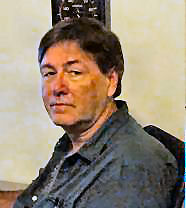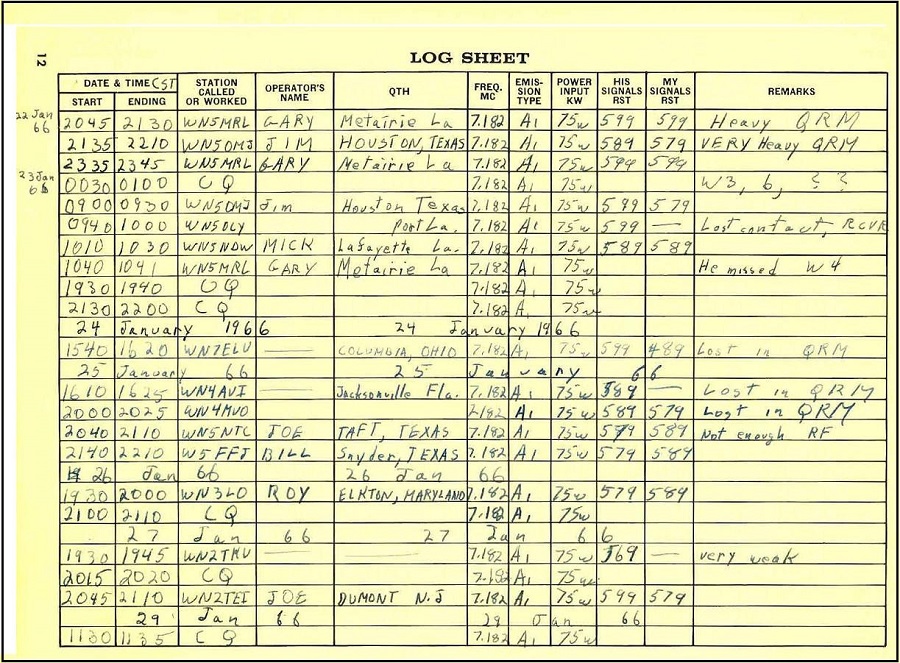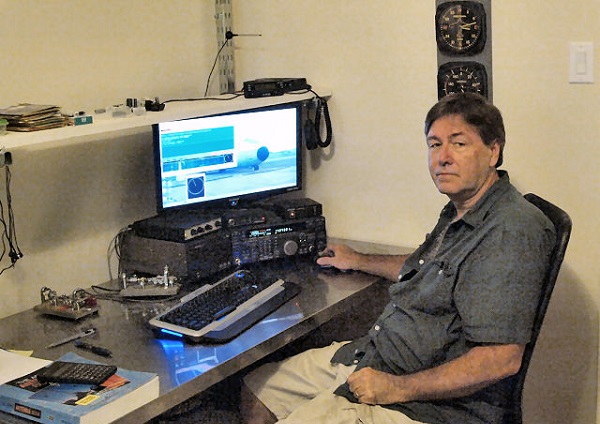|
N5LB Lionel Booth Fulshear, TX QCWA # 30000 Chapter 172 |
 |
I was first licensed while in high school in 1966 as WN5ORM (Novice) and upgraded to General in 1966 and was assigned a new call sign, WA5QEK. Why? Who knows, it was the FCC. In 1970 while in college I upgraded to Amateur Extra and retained the WA5QEK call sign. Then in 1975, or so, with the early FCC program for vanity call signs WA5QEK became N5LB.
My story is no doubt similar to that of many hams of my era; a relative, friend or neighbor with a shortwave radio, tuning around on the radio whenever possible, hearing interesting conversations, some Donald Duck sounding noises, and having an unbridled curiosity. My uncle who worked for IBM would come over and fix the TV, required about once or twice a month in those days, and he would show me how the set worked, what tubes did what, demonstrated how a 1K3 could "bite" thru an insulated screwdriver, and how to solder. Then the neighbors that I cut grass for got themselves a transistorized shortwave receiver for their boat and so of course I would cut grass and tune around with their SW receiver having no idea about the Donald Duck sounds or the markings on the dial that said "amateur radio". What I did know was that I wanted a shortwave receiver. My parents obliged at Christmas by going into debt to get me a Hallicrafters S-108 from Sears that I immediately put to use day and night, sometimes all night and started collecting shortwave QSL's from exotic places that sent my imagination on wild journeys. I became an avid Shortwave listener and even had a Popular Electronics WPE certificate. What fun catching Radio Australia before school.
I discovered electronics stores (Sterling Electronics in New Orleans), real ones, where you could buy parts, one at time if that was all the money you had. In there I found my $4.00, 1965 Radio Amateur's Handbook, read it cover to cover and found out what those odd things the store sold, resistors, capacitors, coils, and crystals could do and electronics quickly became my main interest.
The first 20-30 pages of the Handbook convinced me that I needed to know about this ham radio stuff. It looked like a difficult goal having to learn Morse Code, take FCC tests, and all of the sometimes scary sounding FCC rules. I had two very good helpers, my dad, and Civil Air Patrol. My dad was an Army radio operator (11th Armored Division) during WW2 and in CAP I met my "elmer", though not called that at the time. My dad helped me master the code by copying five letter code groups; no guessing ahead. Andy Anderson, K5GFB, the Louisiana CAP Communications Officer agreed to help me get a novice license. So in 1965 I sat in Mr. Andy's expansive shack before his Instruct-o-Graph and its paper tape, hands shaking, copying 5 WPM, in five letter code groups, thank you dad, which seemed awfully fast. Weeks later WN5ORM showed up in the mail along with a dozen QSL printing company offers. In anticipation I had gone to Sterling Electronics and bought a used HT-40 and a few 40 meter crystals using every last cent of my savings; Harry at Sterling threw in a Dowkey relay. An antenna was put up per the Handbook description for a dipole. I was prepared for the arrival of the FCC license. My very first QSO was across town to my CAP buddy Gary, WN5MRL. The rest as they say is history, a long history. As I write this my reliable TS-850 is waiting to try some new digital modes, maybe digital voice. Who can say when one has an unbridled curiosity.
Excuse me while I go and tune around.
73 N5LB

My first log page

My Station in 2013
October 5, 2013